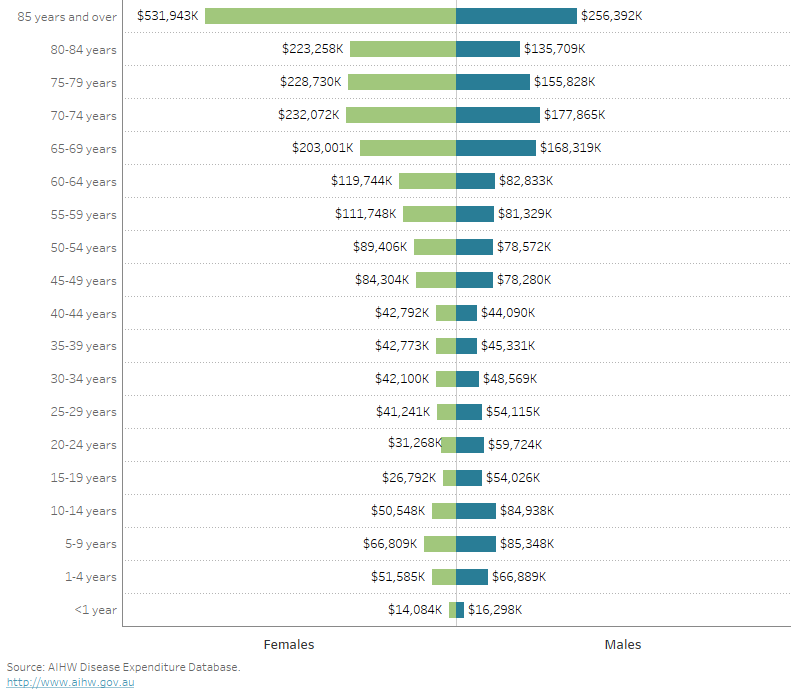Impact of falls among older Australians
Older people are at a higher risk for hospitalised falls due to lower bone density, reduced muscle tone and conditions affecting balance and eyesight. These factors can also impact the ability to recover from a fall and quality of life after a fall (AIHW 2020).
Two ways of measuring the impact of injuries from falls are burden of disease estimates and health care expenditure.
Burden of disease is a measure of the years of healthy life lost from living with or dying from disease or injury for all ages. The most recent data available for all ages are from 2018 (AIHW 2021a, AIHW 2021b), when falls accounted for an estimated:
- 37,704 years of life lost (YLL) among the 4,092 people who died due to a fall, equivalent to 1.2 YLL per 1,000 population
- 37,215 years lived with a disability (YLD) for those who acquired a disability due to a fall, equivalent to 1.3 YLD per 1,000 population
- 74,920 disability-adjusted life years (DALYs) – the total fatal (YLL) and non-fatal (YLD) burden of disease due to falls.
Falls is among the leading causes of burden of disease and injury in Australia, ranking 17th for fatal burden (YLL), 24th for disability (YLD) and 18th for overall burden (DALY) (2018 data). The overall burden of falls in terms of DALYs has risen 17% since 2003.
Older Australians
Among those aged 65 years and over in 2018, falls accounted for an estimated (AIHW 2021a):
- 28,865 YLL among the 3,851 people who died due to a fall, equivalent to 150 YLL per 1,000 population
- 19,170 YLD for those who acquired a disability due to a fall, equivalent to 60 YLD per 1,000 population
- 48,034 DALYs, equivalent to 210 DALYs per 1,000 population.
From 2003 to 2018, there has been an increase in DALYs (AIHW 2021a):
- of 1.6 DALYs per 1,000 for those aged 65–74 years
- 2.9 DALYs per 1,000 for those aged 95+ years.
The AIHW estimates that over a third of DALYs due to falls were linked to particular risk factors that can be mitigated against. Among people aged 65 and over, low bone mineral density was the highest risk factor for falls, estimated to account for 23% (17,532) of DALYs due to falls, followed by alcohol use (4.5%; 3,386) (AIHW 2021c).
In 2018–19, injury was the fourth highest area of health care spending in Australia at $10.3 billion (7.7% of spending), after musculoskeletal disorders, cardiovascular diseases and cancer. Forty-one per cent ($4.3 billion) of this was spent on treating injuries due falls, equivalent to $153 per capita (AIHW 2021d), with the amount spent increasing substantially in older age (Figure 2). Spending includes the combined cost of hospital, primary health care (for example general practitioners, allied health, and pharmaceuticals) and referred medical services (for example medical imaging and pathology) where data are available (Figure 2).
Figure 2: Expenditure on injuries due to falls by age group and sex, 2018–19
Stacked bar chart showing that the cost per person of falls increases in older age groups, with a marked increase in those aged 80 and over. Most expenditure on falls occurs in hospitals, with care provided in non-hospital healthcare settings and on pharmaceuticals costing less.



